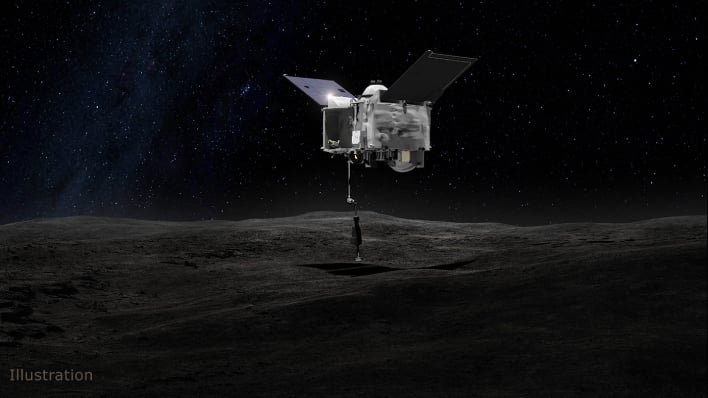God Of Chaos Asteroid Is Headed Shockingly Close To Earth And NASA Springs Into Action

OSIRIS-REx (Origins, Spectral Interpretation, Resource Identification and Security-Regolith Explorer) made a successful journey to asteroid Bennu, retrieved a sample of the asteroid, and then delivered that sample back to Earth. The spacecraft still had a quarter of its fuel left and its instruments were in excellent condition. This led NASA to wonder what the spacecraft should do next. After contemplating several destinations, the team concluded that sending the spacecraft, now called OSIRIS-APEX, to asteroid Apophis.
Part of the reasoning for choosing Apophis is that it will make a very close approach to Earth on April 13, 2029. The asteroid is an “S-type” asteroid that comprises silicate materials and nickel-iron, which differs from that of asteroid Bennu. While Apophis is believed to present no danger of making an impact with Earth in the foreseeable future, it will be within 20,000 miles (32,000 kilometers) of Earth’s surface, closer than some satellites. NASA scientists estimate that an asteroid of this size, making an approach this close, only happens once every 7,500 years.
The 1,100 foot (350 meter) across asteroid gained a bit of fame as an asteroid that could pose a serious risk to Earth after it was predicted that it would come very close to our planet in 2029. However, since that time, Apophis has been observed many times, and at one point deemed to have a slim chance of making an impact in 2068.
“A 2068 impact is not in the realm of possibility anymore, and our calculations don’t show any impact risk for at least the next 100 years,” noted Davide Farnocchia of NASA’s Center for Near-Earth Object Studies. “With the support of recent optical observations and additional radar observations, the uncertainty in Apophis’ orbit has collapsed from hundreds of kilometers to just a handful of kilometers when projected to 2029. This greatly improved knowledge of its position in 2029 provides more certainty of its future motion, so we can now remove Apophis from the risk list.”
Scientists and astronomers will use the upcoming opportunity to observe Apophis to see how the surface of Apophis changes by interacting with Earth’s gravity. The team also hopes to shed more light on to planet formation.
Dani Mendoza DellaGiustina, principal investigator for OSIRIS-APEX, remarked, “We know that tidal forces and the accumulation of rubble pile material are foundational processes that could play a role in planet formation. They could inform how we got from debris in the early solar system to full-blown planets.”
With such a close fly-by of Apophis to Earth, scientists and astronomers are excited about what OSIRIS-APEX can learn about the asteroid. “We learned a lot at Bennu, but now we’re armed with even more questions for our next target,” exclaimed Amy Simon, mission project scientist based at NASA’s Goddard Space Flight Center.

